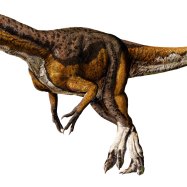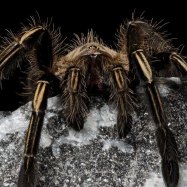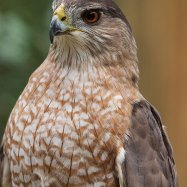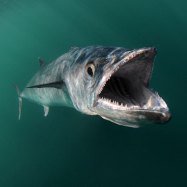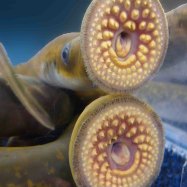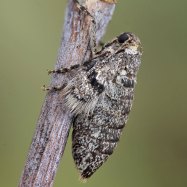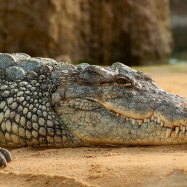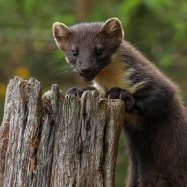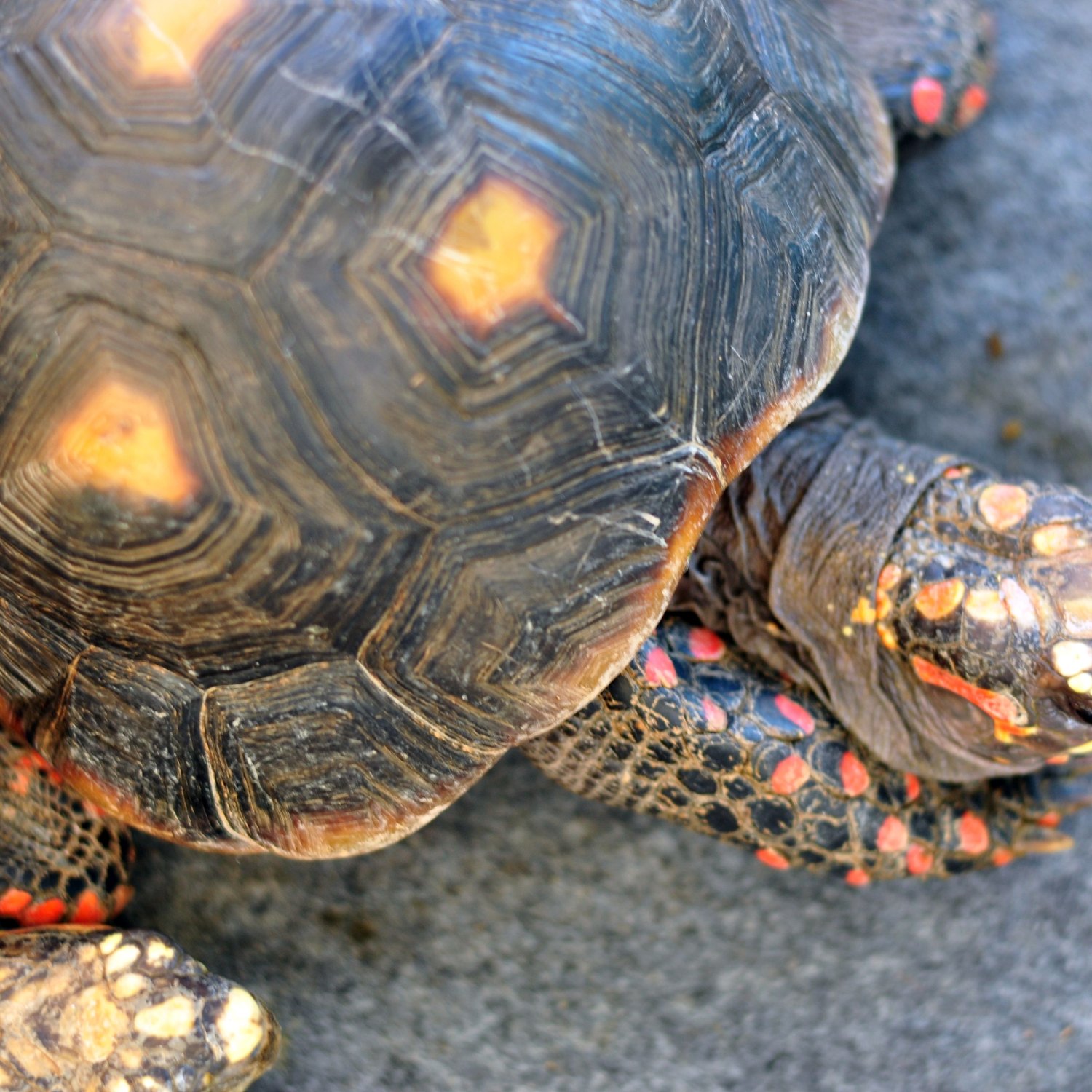
Red Footed Tortoise
10-16 inches (25-40 cm)
The Red Footed Tortoise is a popular pet known for its vibrant red scales on its legs and head. Originating from Central and South America, they are medium-sized with an oval-shaped body, growing up to 16 inches in length. Perfect for those looking for a unique and manageable pet! #RedFootedTortoise #PetCare #ReptileLove
Animal Details Summary:
Common Name: Red Footed Tortoise
Kingdom: Animalia
Habitat: Rainforests, savannas, and dry forests
The Fascinating World of Red Footed Tortoises
Turtles and tortoises are some of the oldest living creatures on Earth, dating back millions of years. These reptiles have captured our imagination with their unique appearance and gentle nature. Among the many species of tortoises, the Red Footed Tortoise stands out with its striking coloration and interesting habits. In this article, we'll delve into the world of these charming creatures and discover why they are a favorite among tortoise enthusiasts Red Footed Tortoise.The Basics of Red Footed Tortoises
Let's start with the scientific name of these amazing creatures - Chelonoidis carbonarius. Commonly known as the Red Footed Tortoise, these reptiles belong to the Kingdom Animalia, the Phylum Chordata, and the Class Reptilia. They are part of the Testudines order and the Testudinidae family. In simpler terms, Red Footed Tortoises are reptiles that belong to the same family as turtles and have similar physical characteristics.Red Footed Tortoises have a widespread habitat, with their natural home being in Central and South America. They can be found in countries like Brazil, Colombia, Ecuador, French Guiana, Guyana, Peru, Suriname, and Venezuela. These tortoises live in a variety of terrains, including rainforests, savannas, and dry forests. They have adapted to thrive in different environments, making them incredibly versatile creatures.
The Diet of Red Footed Tortoises
Like most tortoises, Red Footed Tortoises are herbivorous, meaning they feed primarily on plants Ruddy Duck. Their diet consists of leaves, flowers, fruits, and vegetables. In captivity, they are often fed a balanced diet of greens, such as dandelion greens, mustard greens, and collard greens, along with occasional treats like fruits and vegetables.In their natural habitat, Red Footed Tortoises have a varied diet, and they are known to travel long distances in search of food. Their strong beaks help them to break down tough plant materials, and their slow metabolism allows them to go for long periods without eating. This adaptability in their diet makes them resilient creatures, able to survive in different environments.
The Unique Appearance of Red Footed Tortoises
One of the most striking features of Red Footed Tortoises is their coloration. Their dark brown to black carapace (dome-shaped shell) is accented with red-orange scales on their limbs, giving them their characteristic red feet. This coloration serves as camouflage in their natural habitat, helping them blend in with their surroundings. They also use their shells as a form of defense against predators.Red Footed Tortoises have a medium-sized, oval-shaped body, which can grow to around 10-16 inches (25-40 cm) in length. Similar to other tortoises, they have a thick and sturdy shell that protects their internal organs. They also have a strong pair of hind legs that they use for digging and walking, along with a smaller pair of front legs that help them maneuver through their environment.
The Fascinating Behavior of Red Footed Tortoises
Despite their slow pace, Red Footed Tortoises have fascinating behavior patterns. In the wild, they are known to be social creatures and are often found in groups, called bales. These groups can consist of anywhere between a few individuals to a hundred tortoises. They communicate with each other through various vocalizations, such as hissing, grunting, and barks.Red Footed Tortoises are also known for their sun-loving behavior. They can often be seen basking in the sunlight, helping them regulate their body temperature. This behavior is crucial for their health, as it aids in their digestion and absorption of calcium, necessary for their shells' development. When they are not basking, these tortoises take shelter under thick vegetation to protect themselves from the harsh sun.
Conservation Status and Threats
As with many animal species, Red Footed Tortoises face various threats, such as habitat destruction, illegal wildlife trade, and hunting for their meat and shells. While they are not currently classified as endangered, their population is declining due to human activities. It is essential to educate people on the importance of preserving these magnificent creatures and their natural habitats.In some areas, captive breeding programs have been established to help increase the Red Footed Tortoise population and reduce their dependence on wild populations. These initiatives also aim to educate the public about caring for and keeping these tortoises as pets responsibly.
Conclusion
In conclusion, Red Footed Tortoises are unique and fascinating creatures that have adapted to thrive in diverse environments. Their striking appearance, interesting behavior, and gentle nature make them a beloved species among tortoise enthusiasts. However, it is crucial to remember that they are still wild animals and require proper care and preservation to ensure their survival.As we continue to learn more about Red Footed Tortoises and other animal species, we must also strive to conserve their habitats and protect them for future generations to admire and appreciate. After all, these magnificent creatures are a beloved part of our planet's rich biodiversity and deserve our respect and admiration.

Red Footed Tortoise
Animal Details Red Footed Tortoise - Scientific Name: Chelonoidis carbonarius
- Category: Animals R
- Scientific Name: Chelonoidis carbonarius
- Common Name: Red Footed Tortoise
- Kingdom: Animalia
- Phylum: Chordata
- Class: Reptilia
- Order: Testudines
- Family: Testudinidae
- Habitat: Rainforests, savannas, and dry forests
- Feeding Method: Herbivorous
- Geographical Distribution: South America
- Country of Origin: Brazil, Colombia, Ecuador, French Guiana, Guyana, Peru, Suriname, and Venezuela
- Location: Central and South America
- Animal Coloration: Dark brown to black carapace with red-orange scales on the limbs
- Body Shape: Medium-sized, oval-shaped
- Length: 10-16 inches (25-40 cm)
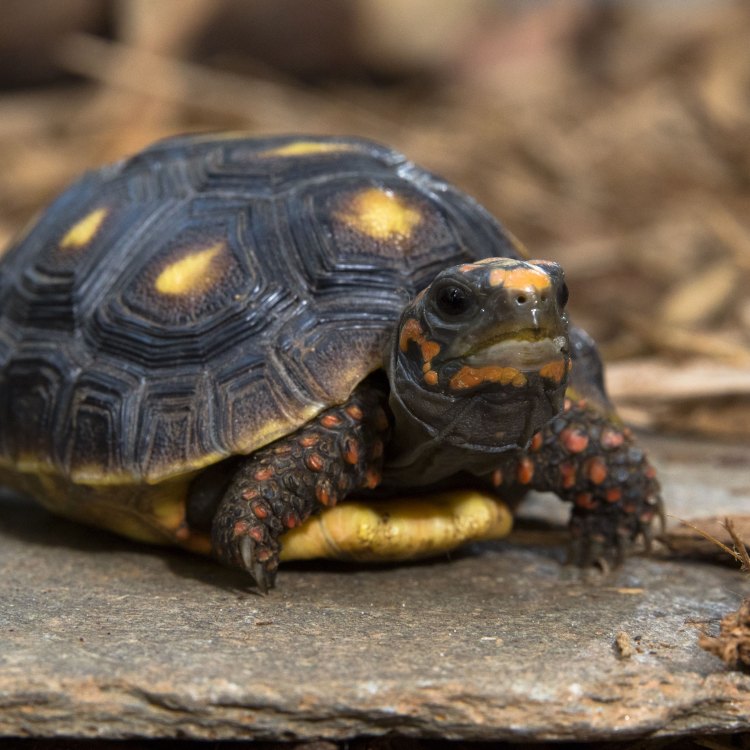
Red Footed Tortoise
- Adult Size: Medium-sized, 10-16 inches (25-40 cm)
- Average Lifespan: 50-60 years
- Reproduction: Sexual
- Reproductive Behavior: Mating occurs during the rainy season
- Sound or Call: Not known for vocalizations
- Migration Pattern: Non-migratory
- Social Groups: Solitary
- Behavior: Diurnal and terrestrial
- Threats: Habitat loss, hunting for meat and pet trade
- Conservation Status: Vulnerable
- Impact on Ecosystem: Seed dispersers
- Human Use: Pet trade and consumed as a food source in some regions
- Distinctive Features: Red-orange scales on the limbs
- Interesting Facts: Red-footed tortoises are popular pets due to their attractive coloration and manageable size. They are also known for their ability to climb trees and their preference for fruits in their diet.
- Predator: Jaguars, ocelots, and large birds of prey
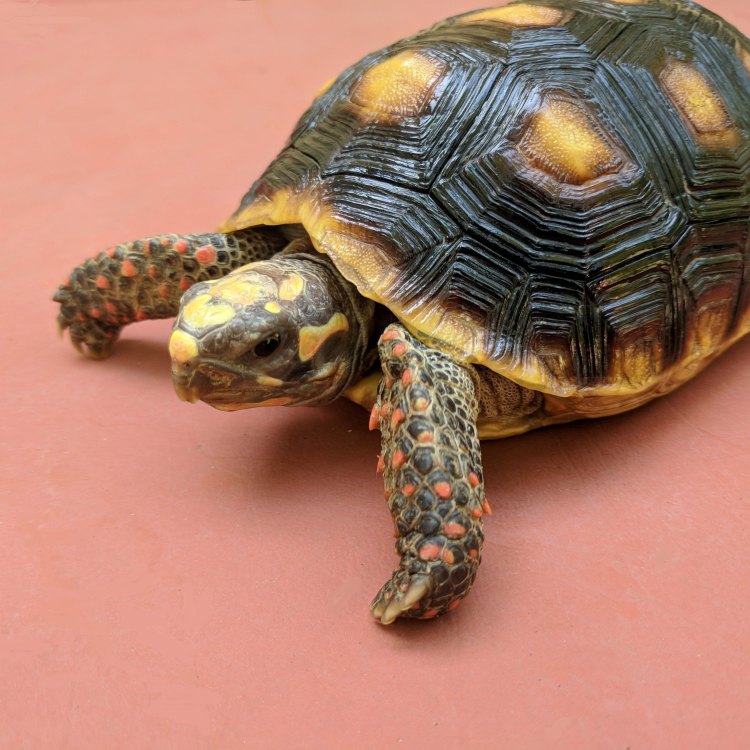
Chelonoidis carbonarius
The Fascinating World of Red Footed Tortoises: A Colorful Escape from Reality
Have you ever dreamed of a pet that not only graces your life with its unique presence but also adds a splash of vibrant colors to your daily routine? Look no further because the red-footed tortoise is here to make your dreams come true.Known for its striking red-orange scales, this medium-sized tortoise has captured the hearts of many, making it a popular choice for pet owners. But there is more to this seemingly colorful and docile creature than meets the eye. From their reproductive behavior to impact on the ecosystem, the red-footed tortoise has a rich and fascinating world waiting to be explored PeaceOfAnimals.Com.
In this article, we will dive into the world of red-footed tortoises, uncovering their distinctive features, behavior, and impact on the ecosystem. So, sit back, relax, and let's embark on a colorful escape from reality.
Average Lifespan and Size
One of the most common questions about red-footed tortoises is, how long do they live? And the answer may surprise you. These gentle reptiles have an average lifespan of 50-60 years, making them a long-term companion for those willing to commit to their care.As for their size, red-footed tortoises are considered medium-sized, with adults reaching between 10-16 inches (25-40 cm) in length. However, some have been reported to grow up to 18 inches (45 cm) in captivity, with proper care and diet.
Reproductive Behavior and Mating Patterns
Like most tortoises, red-footed tortoises reproduce sexually. However, their mating behavior is a sight to behold.Mating for red-footed tortoises occurs during the rainy season, which varies depending on the region they inhabit Russian Blue. During this time, male tortoises will engage in aggressive behaviors to attract females, such as head-bobbing and biting.
Once a female is receptive, the male will mount her from behind, and the pair will engage in copulation. This process can last for several hours and may occur multiple times during the mating season.
Sound or Call
Typically, tortoises are not known for vocalizations. However, some species have been observed making low grunting or hissing calls. As for red-footed tortoises, they are not known for any vocalizations, making them relatively quiet pets.However, don't let their silence fool you. These peaceful creatures may surprise you with their unique behavior and capabilities.
Migration and Social Habits
Unlike some animal species that migrate to different locations in search of food or to breed, red-footed tortoises are non-migratory. They prefer to stay in a specific area, establishing a home base, and exploring the surrounding territory.As for social habits, red-footed tortoises are solitary creatures, only coming into contact with others during the mating season. In captivity, they can be kept with other tortoises of the same species, but it is recommended to provide them with enough space and resources to avoid competition and aggression.
Behavior and Diet
Red-footed tortoises are diurnal creatures, meaning they are most active during the day. They are also terrestrial, spending most of their time on land, except for occasional swims in shallow waters.One unique behavior that has fascinated many is their ability to climb trees. Although it may seem odd for a tortoise to have this capability, it is believed to be an adaption to their natural environment, where trees and shrubs provide shade and food.
Speaking of food, red-footed tortoises have a varied diet, consisting mainly of fruits, leaves, and vegetation. They are also known for their love of watermelon and cactus pads. In captivity, it is essential to provide them with a balanced and nutrient-rich diet to ensure their health and well-being.
Threats and Conservation Status
Unfortunately, like many animals in the wild, red-footed tortoises face threats to their natural habitat and survival. The primary threat is habitat loss due to deforestation, which destroys their homes and food sources.Moreover, red-footed tortoises are also hunted for both the pet trade and their meat, a delicacy in some regions. The pet trade, in particular, has had a significant impact on their populations, as they are often illegally taken from the wild and sold as exotic pets.
As a result, the International Union for Conservation of Nature (IUCN) has listed the red-footed tortoise as Vulnerable on their Red List of Threatened Species. Conservation efforts, including habitat protection and limits on trade, have been implemented in many areas to help preserve their populations.
Impact on the Ecosystem
As seed dispersers, red-footed tortoises play an essential role in their ecosystem. They consume fruits and vegetation, then excrete the undigested seeds, which helps with plant reproduction and diversification in their environment.Without red-footed tortoises, the natural balance and diversity in their habitat could be impacted, affecting other plant and animal species.
Human Use and Distinctive Features
While humans are responsible for many of the threats to red-footed tortoises, we also play a role in their popularity as pets. With their attractive coloration and manageable size, they are a desired species in the pet trade.However, it is crucial to note that owning a red-footed tortoise as a pet requires a significant commitment of care, knowledge, and resources. It is essential to research and understand their needs and well-being before considering them as a pet.
One distinctive feature that makes red-footed tortoises stand out is their red-orange scales on their limbs, which give them their name. The rest of their body is usually dark brown or black, providing a striking contrast.
Interesting Facts
As we come to the end of our journey into the world of red-footed tortoises, let's take a moment to appreciate some interesting facts about these fascinating creatures.Did you know that red-footed tortoises are not just colorful, but they are also excellent climbers? In the wild, they use their strong limbs and curved claws to climb trees and reach fruits and vegetation that they may not be able to access on the ground.
Another fun fact is that these tortoises have a preference for fruits in their diet, and they often shake their heads from side to side while eating, giving the illusion that they are dancing.
Predators
In their natural habitat, red-footed tortoises have a few natural predators, including jaguars, ocelots, and large birds of prey. However, their strong carapace, or shell, provides them with protection against these predators, making them a challenging meal to catch.The Colorful World of Red Footed Tortoises
In conclusion, the red-footed tortoise may seem like just another reptile with a striking color pattern, but it is much more than that. From their unique reproductive behavior to their impact on the ecosystem, these gentle creatures have a captivating world waiting to be explored.But with their populations under threat, it is essential to not only appreciate their beauty but also take action to protect them and their habitat. As with any animal, it is our responsibility to coexist and ensure their survival for generations to come so that the colorful world of red-footed tortoises can continue to add vibrancy to our lives.
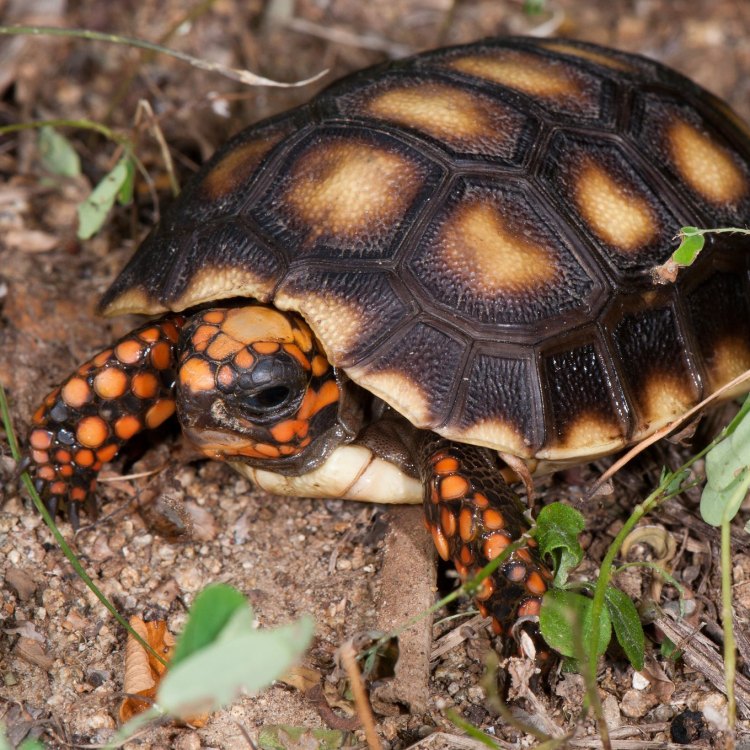
The Fascinating World of Red Footed Tortoises
Disclaimer: The content provided is for informational purposes only. We cannot guarantee the accuracy of the information on this page 100%. All information provided here may change without prior notice.


